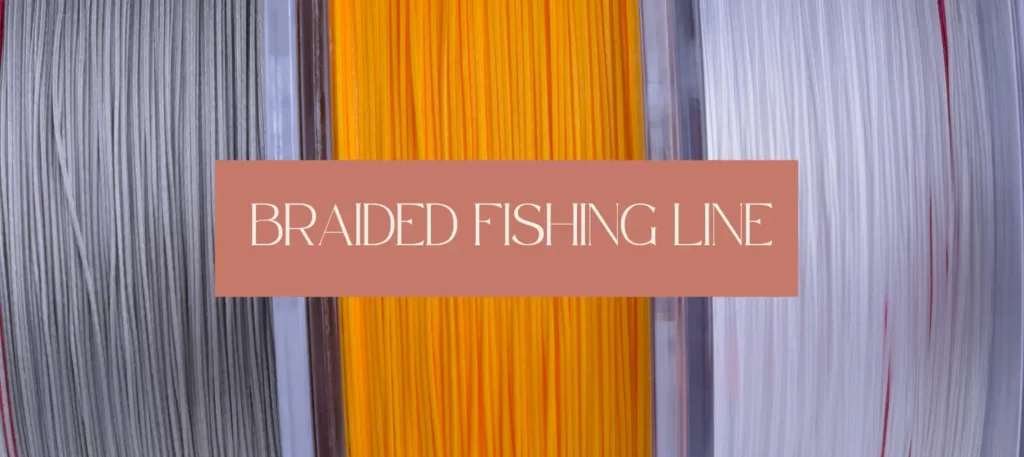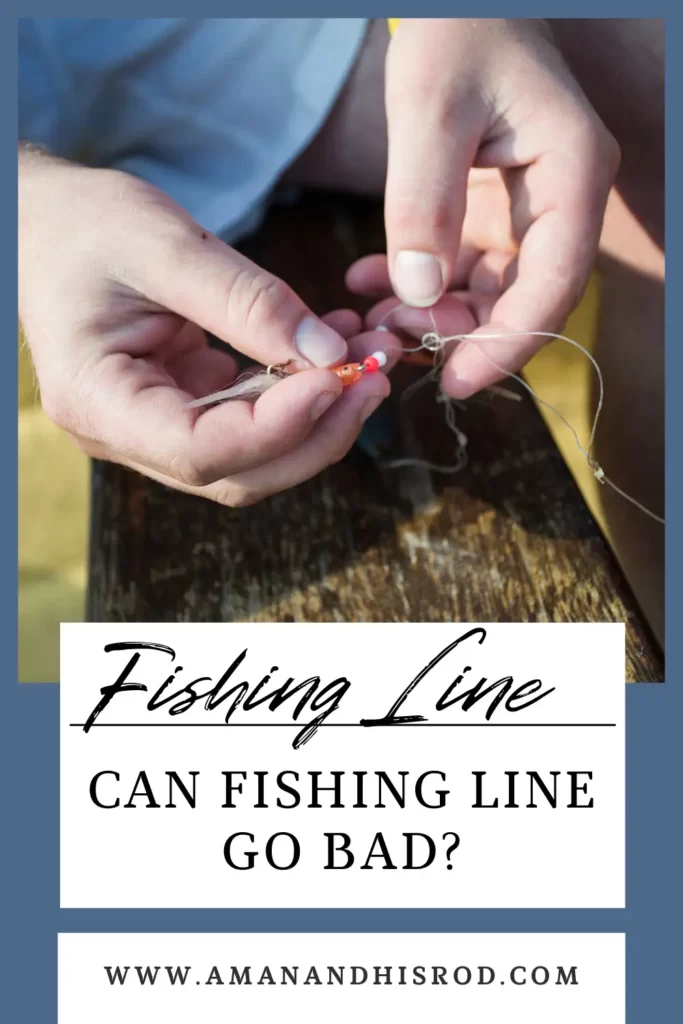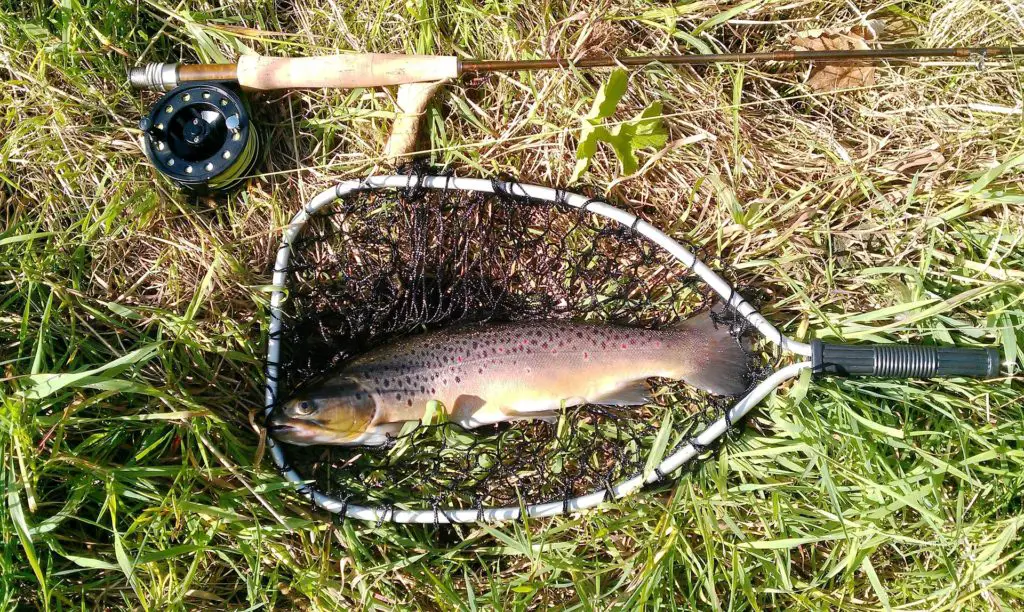Fishing line is an essential component of any angler’s gear, playing a crucial role in successful fishing expeditions. Understanding the lifespan of different types of fishing lines is pivotal for the experienced angler aiming to optimally utilize their equipment. To answer the question, “Can fishing lines go bad?” we must delve into the specifics of the different types of fishing lines available in the market: braided, monofilament, and fluorocarbon lines.
The Durability of Braided Fishing Line
Often recognized for their exceptional strength, braided fishing lines have made a significant impact on the angling community. Due to their unique construction, these lines provide remarkable resistance to abrasion and hence can withstand harsh conditions while maintaining their integrity.

Nevertheless, while these lines have their strengths, they are not entirely impervious to deterioration. They may lose some of their colorings over time, and depending on usage and storage conditions, a braided line can last for a couple of years to even a decade. Despite its longevity, it’s still vital to examine your braided line regularly for signs of wear, such as fraying, that may impact its performance.
Braided fishing lines are commonly used in bass fishing. Braid is the strongest fishing line anglers can use and that strength comes in handy when fishing jigs for bass in thick vegetation.
Monofilament Fishing Line: How Long Does It Last?
Monofilament fishing lines, or ‘mono’ as they’re affectionately known among the fishing community, have been the staple choice for many anglers for several decades. This type of line is generally durable and affordable, which contributes to its popularity.
Monofilament lines typically have a lifespan of two to three years under normal usage conditions. However, this lifespan can vary significantly depending on the frequency of use and the care taken to store it properly. Monofilament is vulnerable to UV radiation and can weaken over time, especially if left in direct sunlight or extreme heat. Regularly checking your mono line for nicks or stretching can help prolong its usability and ensure it doesn’t ‘go bad’ in the middle of an exciting fishing expedition.
Monofilament fishing line is great for fishing senkos for bass. It has the perfect amount of stretch and strength to fish deep cover yet stay less visible to fish.
Fluorocarbon Fishing Line: A Long-lasting Option?
Fluorocarbon fishing lines are revered for their low visibility underwater, making them a preferred choice for clear-water fishing scenarios. When we ask, “Can fishing lines go bad?” fluorocarbon lines present a slightly different response.
Compared to the other two types, fluorocarbon lines have a longer lifespan due to their resistance to UV light, abrasion, and water absorption. This added durability allows a well-cared-for fluorocarbon line to serve an angler well for up to four or five years, potentially even longer. However, similar to other line types, regular inspection for wear and tear is crucial to maintain its effectiveness.
Factors Influencing the Shelf Life of Fishing Line
Just as there are different types of fishing lines, there are also several factors that influence their lifespan. From the way they’re stored to the frequency of their use and the environmental conditions they’re subjected to, all these aspects play a pivotal role in determining how long your fishing line can last before it ‘goes bad’.

The Impact of Proper Storage on Fishing Line Lifespan
Storage of your fishing line is a vital component in preserving its quality and ensuring it lasts as long as possible. Poorly stored fishing line is more susceptible to damage, which ultimately affects their performance and lifespan.
When storing your fishing line, keep it in a cool, dark place to protect it from UV radiation, which can cause the line to become brittle and lose strength. It’s also advisable to remove any tension from the line before storage, as prolonged stress can cause the line to stretch or distort. If you store your line on a reel, make sure it’s not wound too tight as this could also cause distortion over time.
The Effect of Frequent Use on Fishing Line Durability
Like any tool, the lifespan of a fishing line can be significantly influenced by the frequency and intensity of its use. If you’re an angler who spends every weekend at the river, your fishing line will inevitably experience more wear and tear than that of a more casual fisherman.
Each cast and retrieve of each hooked fish, and each snag on an underwater obstacle contributes to the incremental wear on your fishing line. Hence, it’s important to inspect your line regularly for any signs of damage such as nicks, cuts, or severe abrasions. Replacing your line when necessary is a small investment towards ensuring a successful catch.
How Environmental Conditions Affect Fishing Line Longevity
The environmental conditions that your fishing line is exposed to can also significantly impact its longevity. Lines that are regularly exposed to harsh conditions like saltwater, intense heat, or direct sunlight are likely to degrade more quickly.
Saltwater can corrode fishing lines over time, especially if the line is not cleaned properly after each use. High temperatures and direct sunlight can cause the line to weaken and become more prone to breaking. Also, fishing in areas with lots of underwater structure or rough terrain may lead to more abrasions on the line.
Various factors play into the question of “Can the fishing line go bad?” Proper storage, frequency of use, and environmental conditions all contribute to the durability and shelf life of your fishing line. However, by taking appropriate measures, you can prolong the lifespan of your line and enjoy many successful fishing adventures.
Signs Your Fishing Line Has Gone Bad
Just as a seasoned river angler can read the signs of the water, interpreting the signs of a deteriorating fishing line is crucial to maintaining your gear’s effectiveness. Understanding when your fishing line has gone bad can mean the difference between a successful catch and a broken line. Let’s explore the telltale signs of a fishing line nearing the end of its lifespan.

Testing the Strength of Your Fishing Line
A reliable method to determine the condition of your fishing line is by testing its strength. This can be done by tying a simple knot and giving it a firm tug. If the line breaks at the knot or seems to stretch excessively, this may indicate that the line’s structural integrity has been compromised and it’s time for a replacement.
Regular strength testing helps ensure that your line can stand up to the pull of a catch, minimizing the chance of losing a fish due to line breakage. Remember, every fish challenges the strength of your line, so regular checks and replacements can contribute significantly to a successful fishing expedition.
Identifying Brittle or Damaged Fishing Line
Brittleness or visible damage on the fishing line is a clear sign that the line is deteriorating. Lines may become brittle due to exposure to the sun’s UV rays or due to the effect of extreme temperatures. This can lead to the line snapping under tension, which is the last thing you want when you’ve got a catch on the line.
Regularly inspect your fishing line for any signs of cuts, nicks, or abrasions, especially before and after a fishing trip. If you notice your line appears dull, frayed or has any irregularities, it may be time to consider a replacement.
The Role of Color and Texture in Assessing Fishing Line Quality
The color and texture of a fishing line can also provide valuable clues about its condition. Over time, fishing lines, especially braided and monofilament ones, may fade or discolor due to wear and environmental exposure. Although this doesn’t necessarily mean the line’s strength is compromised, it’s often a sign of aging and should be observed closely.
Similarly, changes in the line’s texture, such as hardening, softening, or becoming rough, might indicate the line is wearing out. Fishing lines should maintain a relatively consistent texture throughout their lifespan; any notable changes could be a signal that your line is past its prime.
The question, “Can fishing line go bad?” is answered not just by understanding the types of lines and the factors affecting their longevity, but also by recognizing the signs of a deteriorating line. As an angler, maintaining your fishing line is as crucial as knowing the rivers you fish in. By paying close attention to the strength, appearance, and overall condition of your line, you’ll ensure that you’re always ready for the next big catch.
How to Extend the Life of Your Fishing Line
Maintaining the longevity of your fishing line requires careful attention and practical care measures. By implementing proper storage techniques, regularly maintaining your line, and choosing the right line for your specific needs, you can significantly extend its useful lifespan. Here’s how to get the most out of your fishing line.
Proper Storage Techniques for Fishing Line
One of the best ways to prolong the life of your fishing line is by storing it correctly. As mentioned earlier, fishing lines should be stored in a cool, dark place to protect them from UV radiation and heat, both of which can weaken the line over time.
If your fishing line is stored on a reel, ensure it isn’t wound too tightly, as this can cause the line to become distorted and lose its strength. Also, remember to loosen the drag on your reel when storing it for extended periods to prevent unnecessary stress on the line.
It’s also a good idea to rinse your fishing line with fresh water after each use, especially after fishing in saltwater. This can help remove corrosive salts and prolong the line’s lifespan.

The Importance of Regular Line Maintenance
Regular maintenance plays a critical role in preserving the lifespan of your fishing line. This includes cleaning the line after each fishing trip, especially when fishing in saltwater, to prevent the buildup of salt crystals which can degrade the line.
Additionally, be sure to inspect your line for signs of wear or damage regularly. Small nicks, abrasions, or signs of fraying are indications that your line may need to be replaced. By catching these signs early, you can prevent sudden line failures while fishing.
Choosing the Right Fishing Line for Your Needs
Another aspect of extending the life of your fishing line is choosing the right line for your fishing environment and style. For instance, if you frequently fish in clear water where the line’s visibility may spook fish, a fluorocarbon line may be a good choice due to its lower visibility underwater. On the other hand, if you’re fishing in rough conditions where the line may be subject to abrasion, a braided line’s durability might be advantageous.
By choosing the right fishing line for your needs, you not only improve your fishing experience but also reduce the wear and tear your line experiences, thereby extending its lifespan.
The art of preserving the life of your fishing line involves a combination of proper storage, regular maintenance, and wise line choice based on your fishing conditions. By implementing these strategies, you can ensure that your line remains in top condition, ready for any challenges the river may bring.
Common Questions About Fishing Line Lifespan
In the pursuit of understanding “Can fishing lines go bad,” anglers often have a multitude of questions concerning the lifespan of their fishing lines. Here, we’ll address some of the most common queries that arise in the context of fishing line durability and lifespan.
Can Unused Fishing Line Go Bad?
The longevity of fishing lines is influenced not only by their use but also by how it’s stored. An unused fishing line stored properly in a cool, dark place can last for many years without significant degradation. However, if it’s exposed to adverse conditions such as heat, sunlight, or extreme cold, its quality can deteriorate over time, even if it remains unused. Therefore, the storage conditions of your fishing line are just as crucial as their usage conditions in determining whether they can go bad.
How Often Should You Replace Your Fishing Line?
The frequency at which you should replace your fishing line depends on several factors, including the type of line, frequency of use, and the conditions in which you’re fishing. However, as a general rule of thumb:
- Monofilament lines should be replaced at least once a year if frequently used.
- Braided lines, due to their durability, can often last a couple of years, but should still be inspected regularly.
- Fluorocarbon lines can last a few years with proper care and less frequent use.
It’s important to note that these are just guidelines, and you should always inspect your line regularly for signs of wear or damage, and replace as needed.
Does Fishing Line Biodegrade Over Time?
Most fishing lines, especially traditional monofilament, and braided lines, are made from synthetic materials that do not readily biodegrade. It can take hundreds of years for these lines to break down in the environment, which can lead to significant ecological impact if not disposed of properly.
Some manufacturers are now producing biodegradable fishing lines that decompose more quickly, but these are not yet widely used. This highlights the importance of proper fishing line disposal: always ensure that any discarded line ends up in the trash, not in the water or along the shoreline.
Understanding the lifespan of your fishing line is crucial for effective and responsible angling. By answering these common questions, you can ensure your line performs at its best and contributes to a successful and eco-friendly fishing experience.
Tying It All Together
Fishing lines, akin to every piece of gear in an angler’s arsenal, are subject to wear and tear. However, understanding that different types of lines have distinct lifespans, and recognizing that several factors can influence this longevity, helps to answer the question “Can fishing line go bad?”
By choosing the right line for your needs, storing it correctly, and performing regular maintenance, you can considerably extend the lifespan of your fishing line, ensuring it serves you well in your fishing adventures. And while doing so, being conscious of the environmental implications of discarding fishing lines can ensure that our beloved rivers continue to thrive.
Like the careful selection of your fishing spot or the artful casting of the line, taking care of your fishing line is a significant part of the fishing experience. So, the next time you set out to conquer the river, remember that your trusty fishing line, too, requires some care and attention. After all, a well-maintained fishing line is a silent partner that can make all the difference between a good day and a great day of fishing.

